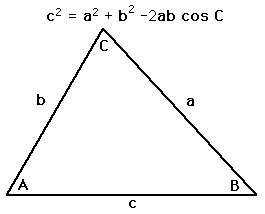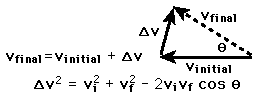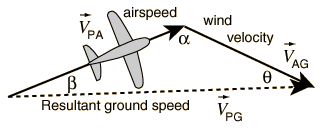Law of Cosines
The law of cosines for calculating one side of a triangle when the angle opposite and the other two sides are known. Can be used in conjunction with the law of sines to find all sides and angles.
 |
Enter data for sides a and b and either side c or angle C. Then click on the active text for the unknown quantity you wish to calculate. Calculation of side c is straightforward, but calculation of sides a or b is more involved since changing either side c or angle C forces changes in both a and b. To calculate a or b, first use the law of sines to find the angle opposite the side you wish to calculate. Then use the law of cosines to find the unknown side length. |
Applications
| HyperPhysics*****HyperMath*****Trigonometry | R Nave |



